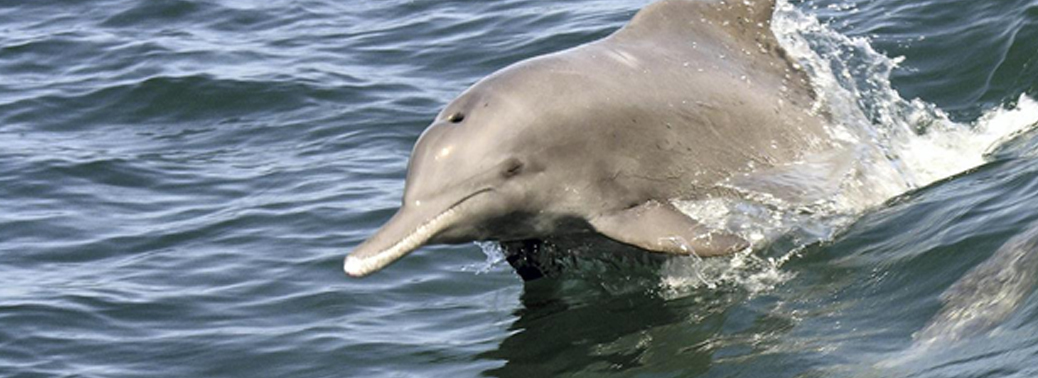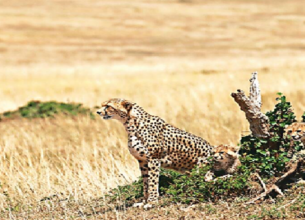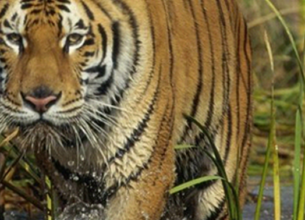WHY INDIA NEEDS PROJECT DOLPHIN?
19, Dec 2019

Prelims level : Bio Diversity & its Threat
Mains level : GS-III Conservation, environmental pollution and Degradation, Environmental Impact Assessment.
Why in News?
- The National Ganga Council (NGC) headed by Prime Minister Narendra Modi met for the first time recently with the proposal to save and enhance the population of the Gangetic Dolphin.
About National Ganga Council:
- The National Ganga Council, also known as the National Council for Rejuvenation, Protection, and Management of River Ganga was set up in 2016. It replaced the National River Ganga Basin Authority (NRGBA).
- The National Ganga Council is formed under the Environment (Protection) Act (EPA), 1986.The council consists of chief ministers from five states along the Ganga — Uttar Pradesh, West Bengal, Uttarakhand, Bihar and Jharkhand along with nine Union ministers and NITI Aayog vice-chairman.
- The central objective of the council is to work on the “protection, prevention, control and abatement of environmental pollution in River Ganga and its rejuvenation to its natural and pristine condition and to ensure continuous adequate flow of water”.
- The council is supposed to meet every year, but since its inception in 2016, no meeting has taken place.National Mission for Clean Ganga (NMCG) acts as an implementation arm of the National Ganga Council.
- NMCG which was established in the year 2011 as a registered society has a two-tier management structure and comprises of Governing Council and Executive Committee.
About Gangetic Dolphin:
- According to the World Wildlife Fund (WWF),the Gangetic river dolphins were officially discovered in 1801 and are one of the oldest creatures in the world along with some species of turtles, crocodiles and sharks.
- The Ganges river dolphin is found in parts of the Ganges-Meghna-Brahmaputra and Karnaphuli-Sangu river systems in India, Nepal, and Bangladesh.
- The Gangetic river dolphin is India’s National Aquatic Animal and is popularly known as ‘Susu’.The Gangetic river dolphins can only live in freshwater, are blind and catch their prey in a unique manner, using ultrasonic sound waves.
- These dolphins prefer deep waters and, as per WWF, they are distributed across seven states in India: Assam, Uttar Pradesh, Madhya Pradesh, Rajasthan, Bihar, Jharkhand and West Bengal.It is among the four freshwater dolphins in the world- the other Three are:
- 1. The ‘Baiji’ now likely extinct from the Yangtze River in China,
- 2. The ‘Bhulan’ of the Indus in Pakistan, and
- 3. The ‘Boto’ of the Amazon River in Latin America.
- 4. These four species live only in rivers and lakes.
- Its presence indicates the health of the riverine ecosystem.
Protection Status:
- Some of the efforts made to preserve and increase the numbers of these dolphins include the setting up of the Conservation Action Plan for the Gangetic Dolphin (2010-2020).
- Conservation Action Plan for the Gangetic Dolphin (2010-2020) has identified threats to Gangetic dolphins and impact of river traffic, irrigation canals and depletion of prey-base on dolphin populations.
- They are placed under “endangered”category by the International Union for Conservation of Nature (IUCN).
- It is listed on CITES Appendix-I and are classified under Schedule 1, Wildlife (Protection) Act, 1972 providing absolute protection and offences under these are prescribed the highest penalties.
- Vikramshila Gangetic Dolphin Sanctuary (VGDS)in Bihar’s Bhagalpur district is India’s only sanctuary for its National Aquatic Animal.
- They are also one among the 21 species identified under the centrally sponsored scheme, “Development of Wildlife Habitat”.
Threats to Gangetic Dolphin:
- Pollution:It faces a number of threats such as dumping of single-use plastics in water bodies, industrial pollution, and fishing.
- Restrictive Flow of Water:The increase in the number of barrages and dams is also affecting their growth as such structures impede the flow of water.
- Poaching:Dolphins are also poached for their flesh, fat, and oil, which are used as a prey to catch fish, as an ointment and as a supposed aphrodisiac.
- Shipping & Dredging: It is also called a blind dolphin because it doesn’t have an eye lens and uses echolocation to navigate and hunt.
- Like bats, they produce high-frequency sounds which help them to detect objects when the sound waves bounce off them.
- Due to their dependence on echolocation, the Gangetic dolphins also suffer from the noise pollution created by large ship propellers, and by dredging.
What does the Statistics say?
- According to the Ministry of Environment, Forest and Climate Change, at last count, the rivers of Assam and Uttar Pradesh had 962 and 1,275 Gangetic dolphins, respectively.
- In Assam, the latest available data is for the period between January and March 2018, while the latest available data for UP is for the period between 2012 and 2015.
- In UP, 671 dolphins were recorded and in 2015, 1272 were recorded.
- According to the ministry, in Assam, the assessment was carried out in three rivers, with the Brahmaputra accounting for 877 of the 962 dolphins in the state.
- In addition to the species being India’s national aquatic animal, the Gangetic dolphin has been notified by the Assam government as the state aquatic animal, too.
- Silting and sand lifting from rivers in Assam has been stopped to maintain its population.














